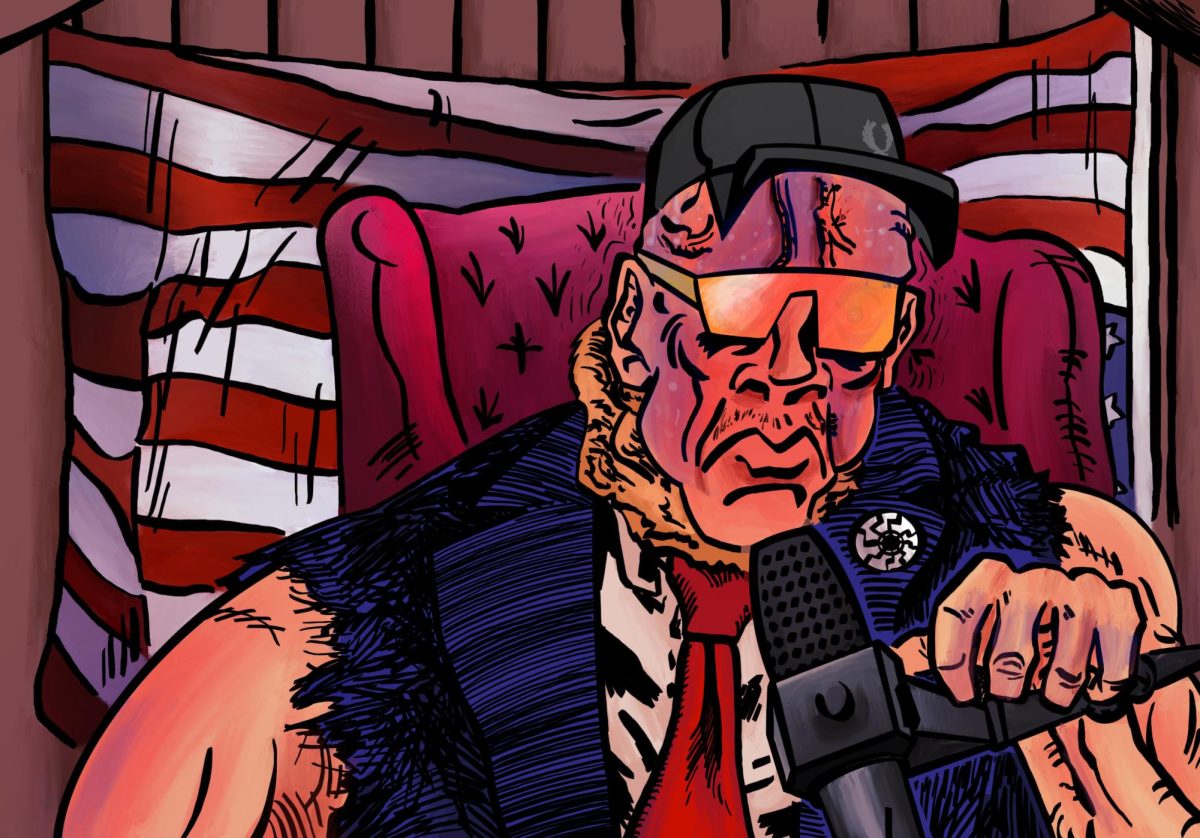On Nov. 5, a sexist rant from Nick Fuentes — a Gen Z right-wing media personality, podcaster and Holocaust denier — went viral, sparking conversations about sexism among young men. In the video, where he speaks about President-elect Donald Trump’s election victory, he specifically taunts women, saying, “Hey bitch, we control your bodies. Guess what? Guys win again.” This video has gained a massive amount of traction, so much so that internet users retaliated by doxxing him. But Fuentes is only one example of a bigger phenomenon — one of many creators responsible for populating social media with anti-women rhetoric.
Gender was a key divider during this election: 55% of male voters casting their vote for Trump, and 53% of female voters casting their vote for Vice President Kamala Harris. The gap becomes even more stark when analyzed by age group. The Wall Street Journal found that 64% of men aged 18-29 voted for Trump. This marks a significant departure from 2020, when 56% of Gen Z males supported President Joe Biden over Trump.
This right-ward drift among young men can be credited to the ultra-conservative ecosystems found in podcasts, on social media apps like YouTube, where far-right influencers tout their extremist views. Their target audience is young boys who are prone to falling into these rabbit holes and becoming radicalized.
One of the most popular of these misogynistic podcast personalities who helped spearhead this movement is Andrew Tate, who gained popularity in 2022. In 2023, Tate was charged with rape, human trafficking and forming an organized crime group to sexually exploit women in Romania. Despite these glaring transgressions, he has amassed a following of over 10 million X users and maintains an avid fanbase. In his content, Tate flaunts a hyper-masculine lifestyle, spewing anti-women rhetoric and posting rage bait.
Although he was banned from both Instagram and TikTok in 2022, the language Tate has used to talk about women has a lasting impact. For instance, Tate has preached the idea that if a woman goes out with a man, she belongs to him — equating women to property. Tate has said that women shouldn’t be able to vote. And, most famously, Tate stated his belief multiple times during the #MeToo movement and beyond that women that have been sexually assaulted should “bear responsibility” for their assault, implying that that they are to blame for the heinous crime being perpetrated against them.
To nobody’s surprise, Tate is also an avid Trump supporter. Following Trump’s win, he tweeted “Tim Waltz, a random who nobody liked — can now disappear back to whatever gay bar they found him in,” and “White dudes for Kamala will cry in their wives boyfriends arms.”
His words clearly reflect a larger belief that to be liberal or progressive is to be feminine. Trump and the GOP present themselves as the party of masculinity and paint the Democrats as the party of weakness. Whether that is true or not is irrelevant — the truth is that the Democratic Party has lost many young men to the perception that a vote for Harris was a vote against manliness. Gen Z men want to feel like men, and Trump’s campaign strategy of manly self-pity merely answered the call.
While it is easy to recognize these red-pilled men online, many of their devout followers are harder to recognize in the real world. Unlike Fuentes or Tate, who blatantly spew their anti-woman rhetoric, there are men who aren’t as vocal about their sexist beliefs, though they still partake in these far-right ideals of hyper-masculinity. It is easy to recognize the danger in these overt displays of sexism, but there is a silent danger that can be found in performative allyship.
Trump leaned into these echo chambers during his campaign, leveraging their influence to solidify his base among young male voters. This courting of young Gen Z men has been dubbed “bro whispering.” Trump has embraced the rhetoric of these alpha male figures, echoing the hyper-masculinized bravado of those like Tate — emphasizing a distance from “woke culture” and retweeting content that mocks progressive ideals. Trump’s son, Barron Trump, reportedly introduced him to this medium, and helped him identify podcasts that he would make appearances on, including “Impaulsive” — hosted by infamous YouTube personality Logan Paul — the eponymous “The Joe Rogan Experience,” and the “Flagrant” podcast hosted by Andrew Schulz and Akaash Singh. Trump also invited many of these hyper-masculine personalities to the Republican National Convention in an attempt to draw in more support, such as UFC President Dana White and Tony Hinchcliffe, a longtime companion of the Joe Rogan sphere. By aligning himself with these figures, Trump positioned himself as the poster child for anti-woke resistance.
The rise of alt-right media and its influence on young men is more than a cultural concert — it’s a societal risk. Online personalities like Fuentes and Tate thrive on exploiting the insecurities of younger male generations, offering the illusion of empowerment that hinges on the dehumanization of women. The creation of these alt-right ecosystems, where aggressive rhetoric is normalized, is shaping the minds of young men across the country. Addressing such a phenomenon requires more than deplatforming these figure heads — we need to dive into the cultural voids these influencers exploit, such as the need for belonging and validation that men so often struggle to find. If we leave these pockets of alt-right misogyny unchecked, we risk online vitriol reshaping our social and cultural values. We need to foster spaces that combat toxic masculinity and offer men pathways to vulnerability without shame.
WSN’s Opinion section strives to publish ideas worth discussing. The views presented in the Opinion section are solely the views of the writer.
Contact Annie Emans and Mehr Kotval at [email protected].























































































































































